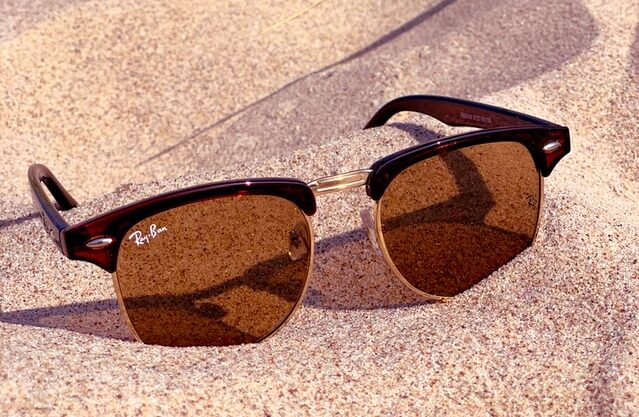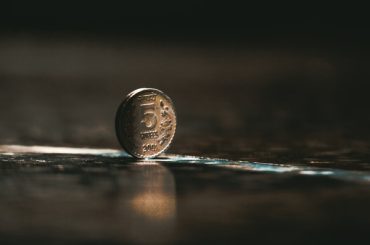Walking down the streets, you see someone sporting a Ray-Ban. There is a sudden speck of judgment that the receptive part of your brain automatically makes. The judgment that the opposite person is wealthy enough. We start visualizing the person’s job, the house they live in, the car they drive, and even how they spend their weekends.
We start to build an entire story just from a brand name stamped on the rim of their sunglasses. There is an assumption that the person has paid a decent amount to grab that pair of glasses. It’s not the simple rimmed glasses that cost so much. The value that the brand name imprints in someone’s mind triggers their visualization about a person wearing the product, which sets its entire identity apart.
But there was a time when this brand was in shambles. The iconic sunglasses have lived through several rebranding stages. The brand, which is now one of the largest selling designer brands in the world, was very different once. But with the right marketing strategy, Ray-Ban has turned around its fate.
If anyone is responsible for turning Ray-Ban the star turn it is today, it’s all thanks to Italian eyewear giant Luxottica. Luxottica bought out the ailing eyewear company from Bausch & Lomb in 1999 for $640 million and turned around its wheels of fortune.
Why Ray-Ban was in distress at first place?
The problem started when customers across the United States could pick up a poor-quality pair of Ray-Bans for around $20 at any convenience store. These $20 Ray-Ban was a result of a strategy gone wrong. The idea was to make them cheap and stack them high. The strategy involved old factories using out-of-date tools and turning out low-quality Ray-Bans by the thousand. These flimsy frames and cheap lenses became a giant headache that took over the responsibility to turn around the brand.
When Luxottica took over, they started focusing on carrying out an aggressive marketing strategy of Ray-Ban. They also focused on product improvement, creative branding and spent multi-million dollars to turn Ray-Ban’s fortunes around.
The First Steps towards the path of rebranding

In 2000, according to Euromonitor International data, Ray-Ban generated 252 million Euros for Luxottica, which was 10% of company sales. By 2014, that had risen more than eightfold to 2.065 billion Euros, accounting for 27% of Luxottica sales. According to industry experts, Ray-Ban now holds the position of 5% of the total global eyewear market.
But this transition was not a smooth ride, and the turnaround has cost Luxottica a massive fortune.
The first step to bring Ray-Ban’s old value proposition back was to improve the product.
In 2000, Luxottica closed down scores of outdated factories across the world and moved production to a state-of-the-art eyewear manufacturing facility in north-east Italy.
A road to rejuvenate the name

After the closure of outdated factories, the second step was to cut off supplies to low-market outlets and rather switch to high-end stores to sell the resuscitated Ray-Ban brand.
This move as a result led to higher prices as it began to introduce new materials for its frames and also capitalize on the latest in optics technology to improve its lenses. These steps to rejuvenate the brand got the price of a pair of Ray-Bans doubled. Now the old low-quality, high volume Ray-Bans were nowhere to be found.
The next step was to add mass-market appeal to what had now turned into an expensive luxury product so as to have business growth. The idea was to position itself in the mid-luxury segment.
Marketing Strategy that revived Ray-Ban
Ray-Ban in 2007 launched the ‘Never Hide’ campaign. It came with a series of YouTube adverts that featured cutting-edge pop bands like the iconic Guns ‘N Roses and Slash.
This was done to promote a ‘cool chic’ image which quickly shifted to woo the everyday audience. The idea behind the campaign was to feature ordinary people in extraordinary circumstances. Let’s have a look.
Although the campaign had cost them millions, they were enormously successful in resuscitating the brand and bringing the iconicity back. These campaigns helped Ray-Ban sunglasses to be back as the dominant player in the sunglasses market.
Luxottica also had to make the painful decision to exit 13,000 points of sale in the early 2000s. The step sacrificed revenue in the short term but would pay off later as they believed that convenience stores and gas stations were not the best avenues for cultivating an upscale image.
And the story continues…
With the success of the Never Hide campaign, Luxottica was spurred to both further improve the product and widen the appeal of the brand. Ray-Ban also now ventured into personalized products.
In 2013, it launched the Re-Mix campaign which allowed customers for the first time to customize their glasses themselves by mixing different frames, materials, and styles in 220,000 different possible permutations.
The campaign helped Ray-Ban to make up 40% of online sunglasses revenues. More innovative mash-up offers followed offering even greater personalized choice. Wayfarer frames which made of leather, denim, and even velvet- one such example.
The key to Ray-Ban’s success has been the unique blend of style and its technical performance. Ray-Ban knows its place in the world of fashion and sticks to its value proposition while enhancing the product with technological improvements.
Interested in reading more Marketing Strategy Stories? Check out our collection.
-AMAZONPOLLY-ONLYWORDS-START-
Also, check out our most loved stories below

Why did Michelin, a tire company, decide to rate restaurants?
Is ‘Michelin Star’ by the same Michelin that sells tires, yes, it is! But Why? How a tire company evaluations became most coveted in the culinary industry?

How to sell $380K bags: The Hermès Marketing Strategy Explained
Hermès has created a €36B empire and has customers spending sleepless nights to buy the products with its innovative marketing strategy. How?

Why you never see any social media post from Apple
Apple’s social media strategy is extremely unusual. In this piece, we connect Apple’s unique and successful take on social media to its core values.

Starbucks prices products on value not cost. Why?
In value-based pricing, products are price based on the perceived value instead of cost. Starbucks has mastered the art of value-based pricing. How?

Nike doesn’t sell shoes. It sells an idea!!
Nike has built one of the most powerful brands in the world through its benefit based marketing strategy. What is this strategy and how Nike has used it?

Domino’s is not a pizza delivery company. What is it then?
How one step towards digital transformation completely changed the brand perception of Domino’s from a pizza delivery company to a technology company?

BlackRock, the story of the world’s largest shadow bank
BlackRock has $7.9 trillion worth of Asset Under Management which is equal to 91 sovereign wealth funds managed. What made it unknown but a massive banker?

Why does Tesla’s Zero Dollar Budget Marketing Strategy work?
Touted as the most valuable car company in the world, Tesla firmly sticks to its zero dollar marketing. Then what is Tesla’s marketing strategy?

The Nokia Saga – Rise, Fall and Return
Nokia is a perfect case study of a business that once invincible but failed to maintain leadership as it did not innovate as fast as its competitors did!

Yahoo! The story of strategic mistakes
Yahoo’s story or case study is full of strategic mistakes. From wrong to missed acquisitions, wrong CEOs, the list is endless. No matter how great the product was!!
-AMAZONPOLLY-ONLYWORDS-END-



















